
- Visit Our Blog about Russia to know more about Russian sights, history
- Check out our Russian cities and regions guides
- Follow us on Twitter and Facebook to better understand Russia
- Info about getting Russian visa , the main airports , how to rent an apartment
- Our Expert answers your questions about Russia, some tips about sending flowers


Russian regions
- Belgorod oblast
- Bryansk oblast
- Ivanovo oblast
- Kaluga oblast
- Kostroma oblast
- Kursk oblast
- Lipetsk oblast
- Moskovskaya oblast
- Orlovskaya oblast
- Ryazan oblast
- Smolensk oblast
- Tambov oblast
- Tula oblast
- Tver oblast
- Vladimir oblast
- Voronezh oblast
- Yaroslavl oblast
- Map of Russia
- All cities and regions
- Blog about Russia
- News from Russia
- How to get a visa
- Flights to Russia
- Russian hotels
- Renting apartments
- Russian currency
- FIFA World Cup 2018
- Submit an article
- Flowers to Russia
- Ask our Expert
Oryol city, Russia
The capital city of Orlovskaya oblast .
Oryol - Overview
Oryol (also known as Orel , Oriol ) is a city located on both banks of the Oka River and its tributary Orlik in the European part of Russia, about 360 km south-west of Moscow. It is the administrative, industrial, cultural, scientific, and educational center of Oryol Oblast.
The population of Oryol is about 298,200 (2022), the area - 121 sq. km.
The phone code - +7 4862, the postal codes - 302000-302043.
Orel city flag
Orel city coat of arms.
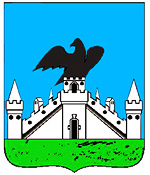
Orel city map, Russia
History of oryol, foundation of oryol.
The territory of Oryol and the Oryol region was inhabited by Finno-Ugric tribes since ancient times. In the 6th-7th centuries, the Slavic tribes of the Vyatichi began the colonization of the territory of the upper Oka. From the beginning of the 9th century, this region was part of the Khazar Khaganate being strategically important due to the trade route passing along the Oka River.
In 965, the Russian troops defeated the Khazar Khaganate, which created the preconditions for the Oka lands to become part of Kievan Rus. But the struggle of the Vyatichi for independence continued for two more centuries.
A settlement at the Oka crossing on the territory of the Chernigov principality existed in the 12th century. This date is also confirmed by archaeological excavations, although written evidence of its existence on the site of the present Oryol in the pre-Mongol era has not been found. From the beginning of the 15th century, these territories became part of the Grand Duchy of Lithuania. At the beginning of the 16th century, the region became part of the Russian state.
In 1566, the fortress of Oryol was founded to protect the southern borders of the Russian state. This year is officially considered the founding date of the city. It was probably named after the Oryol River (the Orlik from 1784).
More Historical Facts…
Oryol in the 17th century
In 1611, during the Time of Troubles, Oryol was plundered and burned by troops under the leadership of the Polish hetman Stanislaw Zolkiewski and the Ukrainian chieftain of the Zaporizhzhya Sich Petro Konashevych-Sahaidachny. A quarter of a century later, it was decided to revive Oryol: “In 1636, to protect from the Crimean and Nogai people, a fortified town was erected on the site of the old Oryol settlement.” In 1645, 1650, 1659, and 1662, Oryol was attacked by the Crimean Tatars.
After the Cossack Hetmanate (today’s central Ukraine) became part of Russia, the military importance of Oryol as a fortress on the way of the Crimean Tatars greatly decreased. As the border of the Russian state moved to the southwest, life in Oryol became more and more calm. The main danger was not hostile nomads, but fires, because both the Oryol Kremlin and town buildings were built of wood.
From the middle of the 17th century, Oryol became one of the centers of the grain and hemp trade. A favorable climate for grain and industrial crops, animal husbandry, as well as the trade routes passing from the south to Moscow and from the eastern regions of Russia to the west provided preconditions for the economic development of the town. In 1698, one of the first Russian sailing factories was opened in Orel by the decree of Peter I.
Oryol in the 18th-19th centuries
In the beginning of the 18th century, the Oryol fortress lost its defensive significance and was abolished. The dilapidated wooden Oryol Kremlin was dismantled. In 1778, the population of the town was about 7.7 thousand people. In 1779, it was almost completely redesigned and only a few streets remained in the same places. In 1784, the Oryol River was renamed Orlik. In 1796, the town became the center of a separate Oryol Governorate.
In 1811, the population of Oryol was about 24,600 people. During the Patriotic War of 1812 (the French invasion of Russia), the “Main Temporary Hospital” for the wounded was organized in Oryol. In the same year, the first printing house was opened in the town. In 1815, a theater was opened. Today, it is one of the oldest theaters in Russia. In 1838, the first local official newspaper “Oryol governorate vedomosti” began to be regularly published (closed in 1917).
In 1843, the Oryol Bakhtin Cadet Corps was opened - a secondary military educational institution for young men of noble origin. In 1854, the Perelygin Brothers Iron-Smelting Plant was founded. In 1855, the town’s professional fire brigade was created.
In 1859, telegraph communication was first established with Oryol. A telegraph line connected the city with St. Petersburg and Moscow. In the 1860s, two railway lines were built through Oryol: from Moscow to Kursk and from Riga to Oryol. The importance of shipping along the Oka River sharply decreased.
In 1895, under the leadership of the Belgian entrepreneur F. F. Guillon, a power plant was built in Oryol. The same Belgian firm began building an electric tram line. In the fall of 1898, Oryol became the second city (after Kiev), where a tram service was opened.

Oryol in the 20th century
In 1914, the population of Orel was 96,200 people. By 1920, as a result of the First World War and the Russian Civil War, the population of the city decreased by a third, to 63.8 thousand.
Since 1928, because of the abolishing of the Oryol Governorate, Oryol was part of the Central Black Earth Region, since 1934 - Kursk Oblast. In 1930, the first tank school in the USSR was opened in Oryol. On September 27, 1937, Oryol became the center of the newly formed Oryol Oblast. In 1939, the population of the city was about 110 thousand people.
On October 3, 1941, during the Second World War, Oryol was captured by German troops. During the occupation, over 20 thousand women were sent to Germany for forced labor from the city. On August 5, 1943, the city was liberated by the Soviet troops. The war and occupation caused enormous damage to the city. For the most part, it was in ruins. All enterprises and more than 2,200 houses were destroyed, bridges and power plants were blown up, etc.
On November 1, 1945, Oryol was included in the list of the 15 oldest Russian cities that suffered the most during the war, which should be restored first. In the postwar years, the construction of new industrial enterprises of the city began. The expansion of its territory continued, especially to the north, where a steel rolling plant and residential areas for its workers were built.
In the late 1960s - early 1970s, a campaign was carried out in Oryol to demolish old pre-revolutionary buildings and even entire neighborhoods not repaired since the war. Despite the protests of local historians, the historical center, with the exception of the central Lenin Street, lost most of its pre-revolutionary low-rise buildings. By 1979, the city’s population exceeded 300 thousand people. By 1991, it growed to 345 thousand.
By the early 1990s, Oryol felt all the consequences of the country’s economic crisis. After the collapse of the USSR, one of the largest enterprises not only in the city, but also in the region, the Oryol Steel Rolling Plant, lost its raw material base in the newly independent Ukraine, which made it rapidly decline. All other light industry enterprises began to close without government support.
In 1992, in the wake of interest in the pre-revolutionary history of the city, some streets were renamed and their old pre-revolutionary names were returned to them. All surviving churches and monasteries were returned to the Russian Orthodox Church. Simultaneously with the closure of Soviet enterprises, new ones began to appear in the city. In 1996, one of the largest Coca-Cola plants in Russia was built and opened in Oryol.
Oryol views
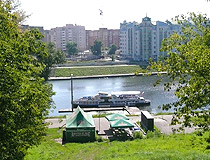
On the banks of the Oka River in Oryol
Author: Mikhail Maksimov
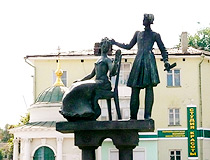
On the street in Oryol
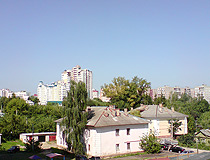
Oryol cityscape
Author: Dmitry Ignatov
Oryol - Features
According to legend, the name of Oryol, literally meaning “eagle”, is associated with the events that allegedly happened during its foundation in 1566. During the construction of the fortress, when workers began to chop down an oak growing on the bank at the confluence of the Oka and Orlik rivers, an eagle flew off the top of the tree. “Here is the owner,” said one of the men. Hence the name of the city. According to the scientific version, the name was most likely taken from the name of the Oryol (Orlik) River, the left tributary of the Oka.
For obvious reasons, the symbol of the city of Oryol is the bird of prey of the same name. Its images can be seen everywhere - on street lamps, walls, monuments, fences, and almost everywhere. More than 100 streets, lanes, driveways, and various geographical objects in all parts of Russia are named in honor of Oryol.
This city is located in the forest-steppe zone of the central part of the Central Russian Upland. The climate in Oryol is moderately continental. Winter is moderately cold. The average temperature in January is minus 6.2 degrees Celsius. In summer, periods of heat give way to periods of relative coolness. The average temperature in July is plus 22.1 degrees Celsius. The best time to visit Oryol is from May to September.
The main river of the city and the region is the Oka (a tributary of the Volga), which flows from south to north making a series of turns between parts of Oryol. In the city center, its left tributary, the Orlik River, flows into the Oka. The rivers are not navigable.
The City Day of Oryol is celebrated on August 5. On this day in 1943, during the Second World War, an artillery salute was given in Moscow to the troops that liberated Oryol and Belgorod - the first salute in the USSR during the war. That is why Oryol is also known in Russia as “the city of the first salute”.
Oryol is quite a beautiful and interesting city, in the center of which it is pleasant to wander, especially for artists or people interested in history and architecture. A lot of historical sites, monuments, and churches are concentrated here. The city and the region specialize in literary and cultural tourism.
It is the literary capital of Russia. Such famous Russian writers and poets as I.S. Turgenev, N.S. Leskov, I.A. Bunin, S.A. Yesenin, M.M. Prishvin, A.A. Fet, L.N. Andreyev lived in this city. Ivan Turgenev Museum (Turgeneva Street, 11), Ivan Bunin Museum (Georgiyevskiy Lane, 1), N.S. Leskova House-Museum (Oktyabrskaya Street, 9), Leonid Andreyev House-Museum (2nd Pushkarnaya Street, 41) are among the attractions of Oryol.
Getting to Oryol by plane is quite problematic. The airport is closed, so there are no direct flights. The best way to go to Oryol is by train. Twice a day, the Lastochka train (Moscow - Kursk) departs from the Kursk railway station in Moscow, which will take you to Oryol in just 4 hours. In addition, about ten other trains depart from Moscow to Oryol every day, so everyone can choose the best option in terms of time and cost. You can get to Oryol from St. Petersburg by the train “St. Petersburg - Belgorod”, which departs every day at about midnight.
Main Attractions of Oryol
Sculpture “Eagle” . The 4-meter-high sculpture of an eagle was installed on the square in front of the Oryol Railway Station in honor of the 450th anniversary of the city in 2016. Since then, it has been considered the symbol of the city. This magnificent bronze bird perched on a pedestal in the form of a globe greets everyone who arrives in Oryol by train. It is a great place to take some photos. Privokzalnaya Square, 8.
The building of the Oryol Railway Station, constructed according to the unique project of the architect S.A. Mkhitaryan in the style of Russian classicism in 1949-1950, is considered an architectural landmark of the city. The old station building that stood on the same site was almost completely destroyed during the Second World War.
Lenin Street - a pedestrian street in the historic center of the city, the main walking area of Oryol. Along it, you can find shops, cafes, restaurants, and offices. Most of the buildings are architectural monuments of the 19th century; former merchants and trading houses, hotel buildings, the building of the movie theater “Pobeda” (1952) in the neoclassical style. This street is about 660 meters long, it starts at the Alexander Bridge over the Orlik River and ends at Lenin Square.
On Lenin Square there are government buildings, the theater named after I.S. Turgenev, the building of the Oryol Main Post Office, two large hotels ( “Rus” and “Salute”), and of course a monument to Lenin. All major city events take place here. In winter, you can find the main New Year tree of Oryol here, as well as a skating rink.
Oryol Museum of Local Lore . Founded in 1897, it is one of the oldest museums in Oryol. There are expositions reflecting the history, culture, and life of the residents of this region for many centuries. The museum also has exhibitions devoted to the flora and fauna of the Oryol region. In total, there are more than 170 thousand exhibits: paintings, documents, household items, old coins, crystal, porcelain, textiles, antique furniture, etc. Gostinaya Street, 2.
Oryol Museum of Fine Arts . The collection of this museum has more than 7 thousand exhibits: about 1,500 paintings, more than 200 sculptures, more than 3,000 drawings, and about 1,800 items of decorative and applied art. The collection of icons of the 18th-19th centuries is of particular value, as well as a collection of portraits of aristocrats and members of the royal family of the same period.
Also, this museum has an interesting exhibition of works of art created by Soviet artists. The foreign department has about 500 landscapes, portraits, and icons from Great Britain, France, Germany, Italy, Austria, and Poland, as well as drawings, sculptures, and household items of the 16th-20th centuries. Oktyabrskaya Street, 29.
The Epiphany Cathedral - the oldest stone building in Oryol located on the bank of the Orlik River near the pedestrian bridge over the dam, not far from the confluence of the Orlik into the Oka. This is the only surviving building in the part of the city where the Oryol Fortress once stood.
The church was built in the Naryshkin Baroque style at the beginning of the 18th century. In 1837, the building was rebuilt in a classical manner. In the 18th-19th centuries, the cathedral bell tower was the tallest building of Oryol. In 1900, the bell tower was rebuilt in the neo-Russian style. Bogoyavlenskaya Square, 1.
Church of the Iverskaya Icon of the Mother of God . This beautiful church was built to commemorate the coronation of Emperor Nicholas II in the late 19th - early 20th centuries. The funds were allocated by the Oryol railway workers. The building was constructed near the Oryol Railway Station in the picturesque eclectic style combining elements of the Russian, Byzantine, and Romanesque styles. Privokzalnyy Lane, 9.
St. Michael the Archangel Cathedral . This magnificent building in classical style was built on the bank of the Orlik River at the beginning of the 19th century. It is considered the most beautiful church in Oryol. After its construction, it was used for celebrations and reception of royal persons. Mikhaylo-Arkhangelskiy Lane, 20.
Park “Oryol Fortress” (also known as “Strelka”). The park is located on the site of the city’s foundation at the confluence of the Orlik and Oka rivers. On its territory there is a memorial stele with a height of 27 meters, on which the image of the old Oryol coat of arms is placed, as well as the chronicle of the main historical events associated with Oryol. Here you can also see a monument to the liberators of Oryol during the Second World War.
The building of the Oryol Office of the Central Bank of Russia - an incredibly expressive building that occupies an entire city block. It was built in the pseudo-Russian style for the Oryol Commercial Bank, one of the first joint-stock banks of the Russian Empire, in 1897-1899. It is the best example of this architectural style in the Oryol region with its bright red facade and decorative towers. Gostinaya Street, 6.
Orel city of Russia photos
Pictures of oryol.
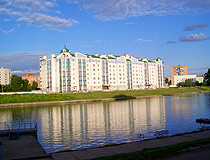
Summer in Oryol
Author: T.Chouckaev
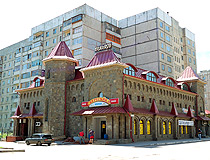
Oryol architecture
Author: Andrei Koval
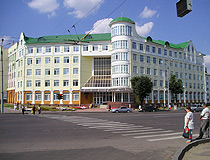
Modern architecture in Oryol
Author: Michael Krasilnikov
Sights of Oryol
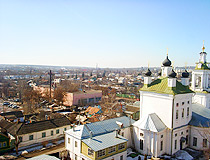
Church of Elijah the Prophet in Oryol
Author: Vladislav Alekseev
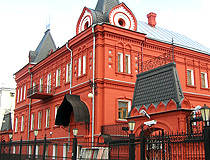
The building of the Central Bank of Russia in Oryol
Author: E.N.Veselov
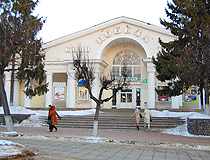
Movie theater Pobeda in Oryol
Author: Kiyanovsky Dmitry
The monument to the pilots in Oryol
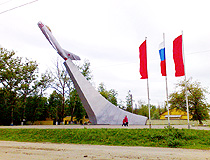
MiG-17 jet fighter in Oryol
The questions of our visitors
The comments of our visitors.
All 8 comments
- Currently 2.86/5
Rating: 2.9 /5 (152 votes cast)

IMAGES
VIDEO
COMMENTS
It's Time You Get Your MTI — CALL 636.639.1166. Marine Technology Inc. (MTI) is the industry leader in manufacturing of High Performance Racing and Pleasure Catamaran style boats, Center Console Vee-Bottoms and Twin Outboard Catamarans. MTI Boats include a line-up of custom MTI-V, Offshore Pleasure Boats, Race Boats, Offshore Boats.
Despite lean economic times, Marine Technology, Inc.'s largest high-performance catamaran (MTI 48 foot) is its hottest seller. Two years ago Marine Technology, Inc. introduced its 36-foot-long catamaran. Based in Wentzville, Mo., the high-performance catamaran builder already had 39-, 42-, 44- and 55-foot long models. The thinking was that ...
Feel free to anytime for all of your high performance sales or service needs. Our MTI Pleasure Series Catamarans, of various sizes, have been designed to provide the customer with the safest experience and the best high performance boat available. With boats available from 38' to 52', rest assured, MTI can customize an offshore boat to meet ...
Powered by twin Mercury Racing 1100 engines with three-year warranties standard, the eight-seat model is dubbed the MTI 482. The interior of the MTI 482 catamaran boasts suspension seating. "The 482 is very exciting for MTI as it's the first new inboard cat we've done in a few years," Taylor Scism said. "Inboard cats are where MTI ...
"The reception to the 482 has been great," said Taylor Scism, MTI's vice president. "Not only do we have several orders, we have another demo next week." That the new 48-footer is a sterndrive-engine model makes MTI's move that much sweeter given the steady decline in sterndrive-equipped high-performance catamarans since 2010-2012.
The MTI 48 is now available in a CE/EC approved model for European markets. The green boat in the photos has passed all CE qualifications and is powered by CE approved Mercury Racing 1100s for performance and reliability. Length Over All (LOA): 48' • Beam: 10′ - 6" • Fuel Capacity: 270 Gallons.
Offered by Performance Boat Center of Osage Beach, Mo., this 2021 MTI 48 catamaran is powered by Mercury Racing 1100 engines with M6 drives. According the listing, the all-carbon-fiber 48-footer's quad-cam four-valve turbocharged engines have just 17 operating hours. Each of the eight seats in the cat's cockpit has a flip-up bottom cushion.
The starting price is $250,000, the most expensive is $999,950, and the average price of $837,475. Related boats include the following models: V42, 340X and 390X. Boat Trader works with thousands of boat dealers and brokers to bring you one of the largest collections of MTI 48 boats on the market. You can also browse boat dealers to find a boat ...
The catamaran gently came on plane in 6.2 seconds with excellent forward visibility. With Teague handling the Latham Marine sticks, the boat was quickly running 107 mph with the Mercury Racing engines turning a tame 4,500 rpm. Increased another 1,000 rpm, the 48-footer showed 136 mph on the GPS. 2010 PERFORMANCE REVIEW:MTI 48 SERIES
Loyal MTI customer Albert Haynesworth, a defensive tackle for the Washington Redskins, reinforces Scism's point. Not only did he step up from a 44-foot-long MTI cat to the 48-footer, he's changing out his twin Mercury Racing 1025/1200 engines for a pair of Mercury Racing 1350s. (Race fuel and added supercharger boost increase, which can be ...
With more than 250 members of the Marine Technology Inc. family on hand to celebrate the Wentzville, Mo., company's 25th anniversary this evening at Camden on the Lake Resort in Lake Ozark, Mo., MTI founder Randy Scism announced that the manufacturer is developing a new 48-foot inboard-powered catamaran.. The MTI team announced it is building a new inboard-powered 48-foot catamaran.
Very cool to have 8 orders already! Love the high performance offshore with real engines!
This MTI Catamaran is the vessel in which the Wake Effects Offshore Race Team was able to achieve both National and World Super Boat Unlimited Championship titles, as well as the Triple Crown, in the 2016 Super Boat International Racing Season. Phone: Office Headquarters — [636] 639-1166 Sales — Tom: [314] 803-8842 Sales — Taylor: [636 ...
Oryol - Overview. Oryol (also known as Orel, Oriol) is a city located on both banks of the Oka River and its tributary Orlik in the European part of Russia, about 360 km south-west of Moscow.It is the administrative, industrial, cultural, scientific, and educational center of Oryol Oblast. The population of Oryol is about 298,200 (2022), the area - 121 sq. km.
Top Zoos & Aquariums in Oryol: See reviews and photos of zoos & aquariums in Oryol, Russia on Tripadvisor.
Offered by Big Thunder Marine at the Lake of the Ozarks in Central Missouri, this 2010 model-year MTI 48 Race/Pleasure catamaran is powered by Mercury Racing 1350 engines with M8 drives. According to the listing, the turbocharged powerplants have 216 operating hours. Additional propulsion hardware includes five-blade CNC propellers from Mercury Racing.
Oryol. Oryol (Russian: Орёл, IPA: [ɐˈrʲɵl] ⓘ, lit. 'eagle'), also transliterated as Orel or Oriol, [9] is a city and the administrative center of Oryol Oblast, Russia, situated on the Oka River, approximately 368 kilometers (229 mi) south-southwest of Moscow. It is part of the Central Federal District, as well as the Central Economic ...
The 2016 48′ MTI Catamaran! Apr 15 2016. News. Congratulations to the Morley family on their MTI 48! This boat will be departing the US and heading to Spain where the Morleys enjoy their summers. We have worked to achieve CE/EC Certification for the MTI 48 which allows legal importation to European countries.
The Oryol Region is located in south-western European Russia and is one of the smallest regions in Russia. The region is famed for its literary connections as many famous Russian poets and writers lived and worked here, including Ivan Bunin, Nikolai Leskov, Ivan Turgenev, Afanasi Fet and Mikhail Prishvin. The region's gem is Turgenev's Spasskoe-Lutovinovo Estate just outside Mtsensk, where the ...